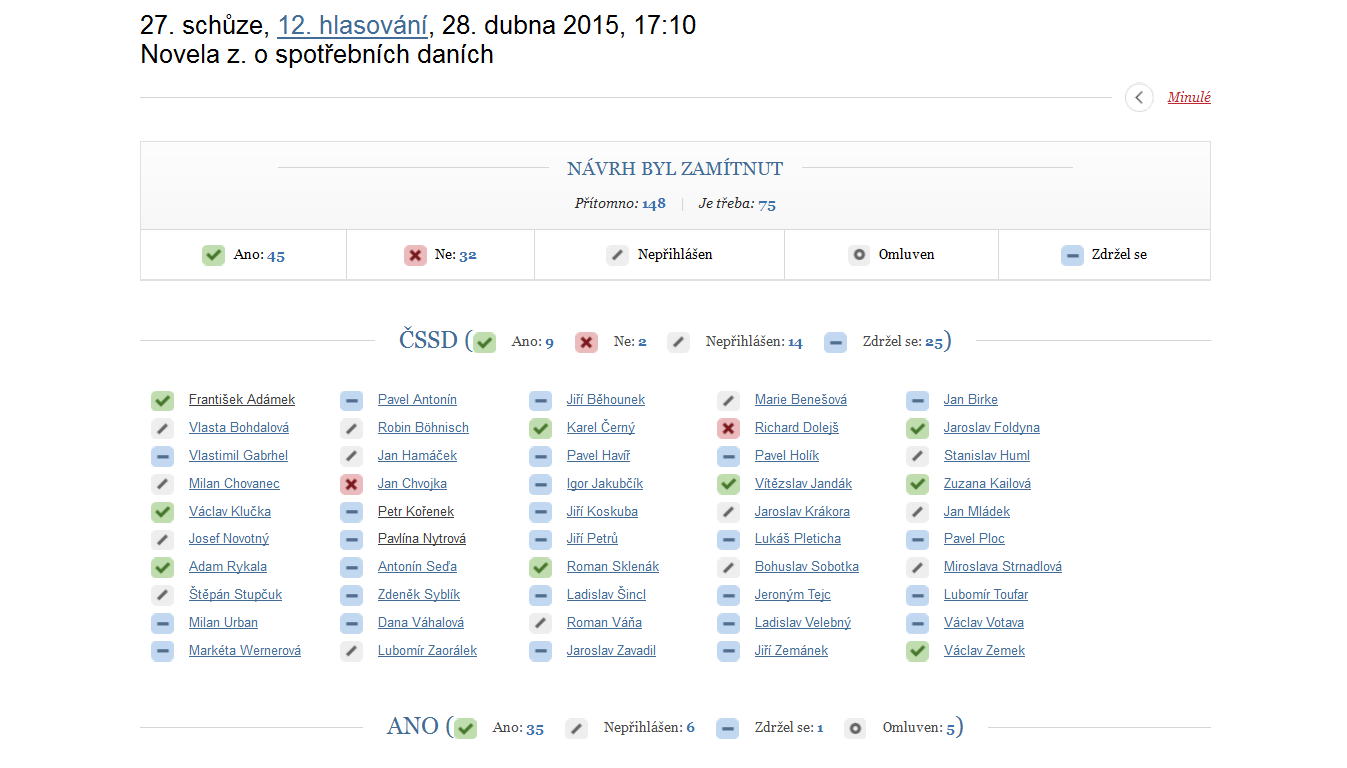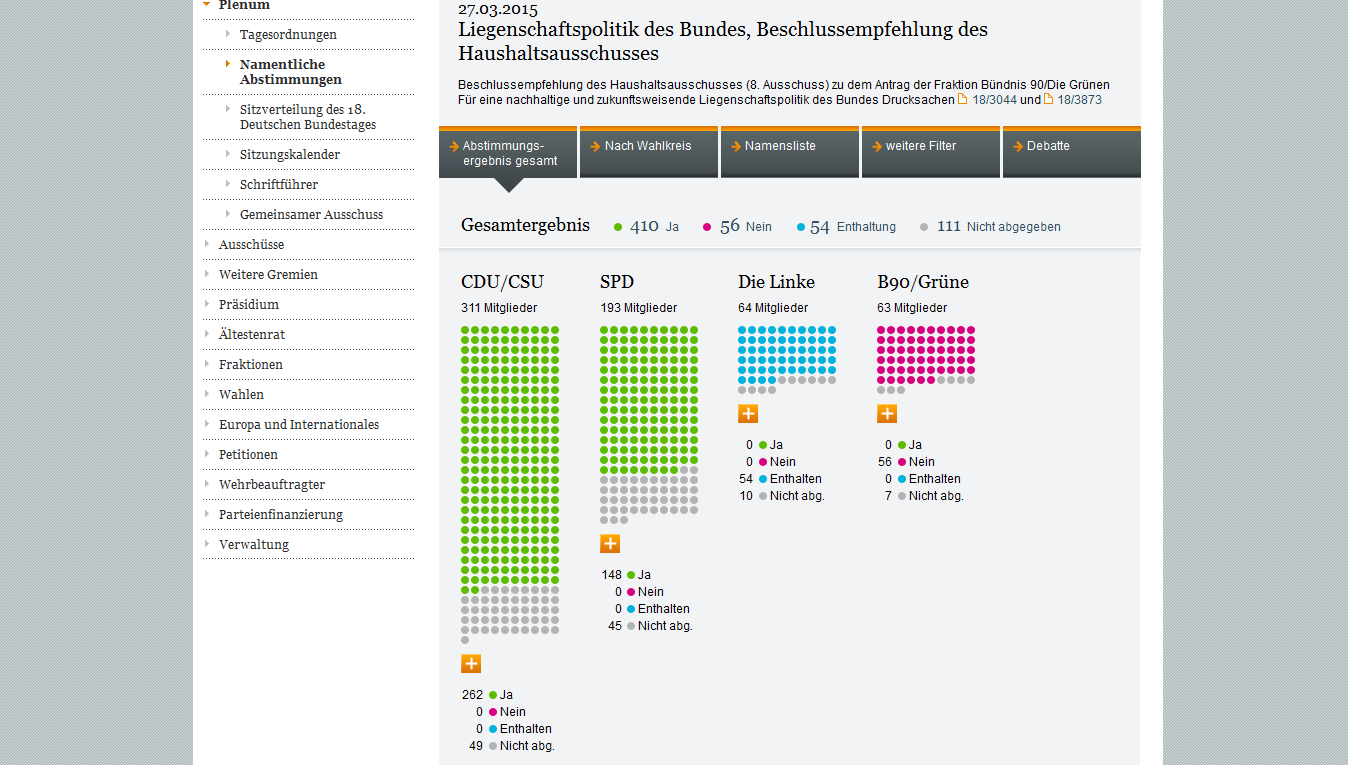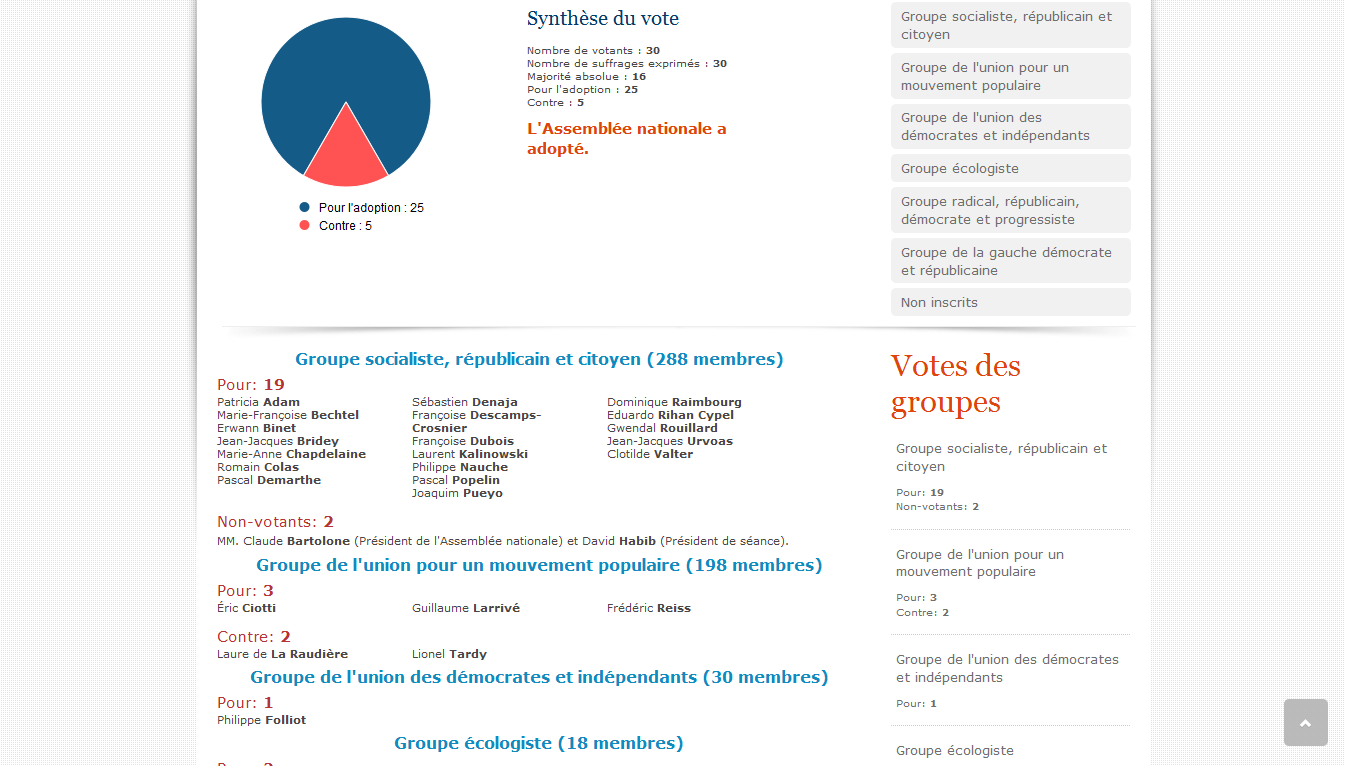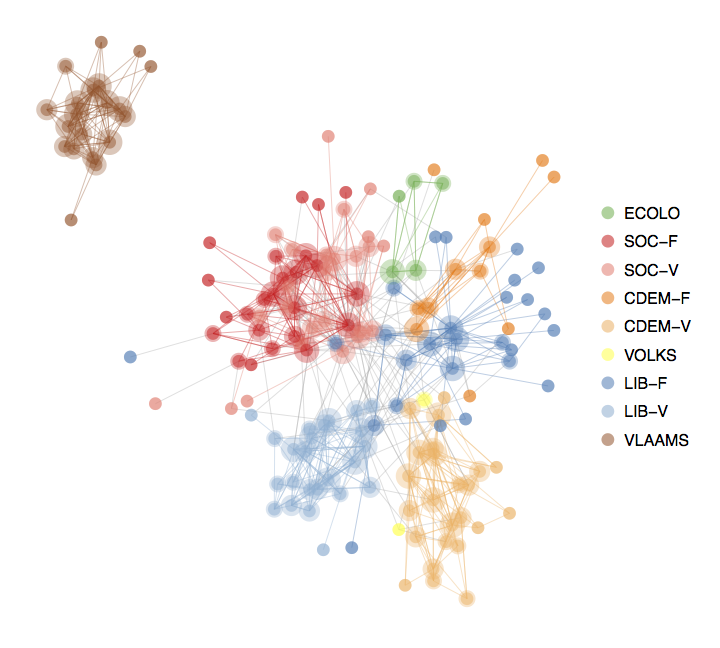The Czech parliament has been measured as one of the most open parliaments in Eastern Europe (for example here and here) and among few that proactively publish raw data. Recently, the IT Department of the parliament released several new datasets.
They started publishing open data in 2014 with encouragement from the local parliamentary monitoring community and have expanded the scope of the data several times since then. The first datasets released cover plenary voting and information about MPs, especially their membership in various parliamentary bodies.
Later, data on individual bill proposals were released, including detailed information on how they move through the legislative process. This is important not only for parliamentary monitoring experts but also for political science and law researchers since it reveals various practices of law-making that are not explicitly outlined in the rules of procedure of the parliament.
Several types of data from the Senate, the upper chamber of the parliament, were added after that. Newly, the parliament released detailed data on sessions and their agenda which I have immediately used in my latest blogpost (it is in Czech but Google translates it fairly well).
It is important to note that most of the data covers the entire period of post-communist history and in some cases even the interwar period of 1920s and 1930s, making the Czech Republic one of few countries where pre-WWII parliamentary data has been digitalized (along with the US, UK, Australia and France).
The data are released as regularly updated tables in the UNL format. We at KohoVolit.eu, a Czech and Slovak parliamentary monitoring organization, prefer this rather than publishing JSON or XML files via an API (application programming interface) since it makes it easier to access the data for people with no coding skills. The tables can be opened in Excel, which is used often for basic data analysis, as well as easily combined to reconstruct the original database.
APIs are much more useful for advance analyses and building applications on the data, but require a bit more experience to work with, which most users such as journalists and researchers do not always have. In the case of the Czech parliament, as well as several other Eastern European parliaments, KohoVolit.eu actually built an API in our ParlData.eu project.
In international comparison, the Czech parliament still remains among very few legislatures that proactively publish raw data. The most progressive country in this respect remains to be Sweden which provides an official API, as well as database dumps in most commonly used formats (CSV, JSON, SQL and XML).
Other countries with parliamentary APIs include Norway (plus dumps in CSV and XML formats), Switzerland (CSV, JSON, XML), Hungary where the parliament introduced its API fairly recently (though it requires registration) and Georgia where the official parliamentary API was actually built by a local parliamentary monitoring organization (JumpStart Georgia). Several other parliaments publish XML files with various types of data (e.g. in Ireland, Romania, Spain).
Kamil Gregor is a data analyst with KohoVolit.eu and Masaryk University in Brno, Czech Republic.



